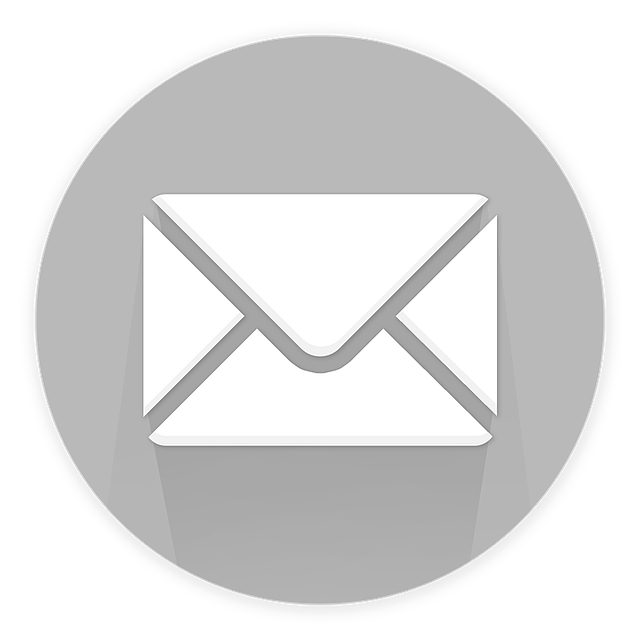In the vast landscape of digital marketing, email remains a powerful tool for startups looking to connect with their target audience. Just like a well-crafted symphony, building an effective email marketing strategy requires careful orchestration to strike the right chords with your customers.
But fear not, for we are here to guide you through the process. In this article, we will show you how to create a harmonious email marketing strategy that resonates with your startup’s goals. By following our step-by-step approach, you’ll be able to compose compelling emails that engage your audience, drive conversions, and ultimately, compose a success story for your startup.
The first movement in our symphony of email marketing is defining your target audience and goals. By understanding who you’re trying to reach and what you want to achieve, you can compose emails that truly strike a chord with your recipients.
So grab your baton, and let’s dive into the art of building an effective email marketing strategy for your startup.
Key Takeaways
- Defining target audience and goals is crucial for resonating with customers
- Building a quality email list involves using opt-in forms and incentives
- Effective writing techniques and engaging subject lines entice recipients to open emails
- Tracking metrics like open rates, click-through rates, and conversion rates is crucial for understanding effectiveness
Define Your Target Audience and Goals
Defining your target audience and goals is crucial for crafting an email marketing strategy that truly resonates with your customers and drives meaningful results.
Identifying customer personas allows you to understand the specific needs, preferences, and behaviors of your target audience. This knowledge enables you to create personalized and relevant email content that will engage and convert your subscribers.
Additionally, setting measurable objectives ensures that your email marketing efforts are focused and aligned with your overall business goals. Whether you aim to increase brand awareness, drive website traffic, or boost sales, having clear goals helps you track your progress and make data-driven decisions.
By defining your target audience and goals, you lay the foundation for an effective email marketing strategy that will build a quality email list and ultimately drive the success of your startup.
Build a Quality Email List
To build a quality email list, make use of opt-in forms and incentives to collect email addresses. Offer valuable content or exclusive deals in exchange for signing up, enticing your target audience to provide their contact information.
Additionally, segment your email list to ensure personalized messaging. By categorizing subscribers based on their preferences or behavior, you can deliver targeted content that resonates with each individual, increasing engagement and conversion rates.
Use opt-in forms and incentives to collect email addresses
By offering a free e-book on social media marketing, startup company XYZ was able to entice visitors to their website to fill out an opt-in form and provide their email addresses. This strategy is in line with current email marketing trends, as it allows businesses to build a quality email list for effective communication.
Opt-in forms serve as a valuable tool in collecting email addresses, ensuring that the recipients have consented to receive emails. By offering an incentive, such as a free e-book, businesses can increase the chances of visitors willingly providing their contact information. This not only helps in building a larger subscriber base but also improves email deliverability rates.
Once you have a quality email list, the next step is to segment it for personalized messaging, which we will discuss in the subsequent section.
Segment your email list for personalized messaging
Maximize the impact of your email campaigns by segmenting your email list. This allows you to personalize your messaging and connect with your audience on a deeper level. By dividing your subscribers into different segments based on their demographics, preferences, or behavior, you can deliver customized content that resonates with each group.
This customization benefits your startup in several ways. Firstly, it helps you create targeted campaigns that address specific pain points or interests of different segments. This increases the relevance and effectiveness of your emails, leading to higher open and click-through rates.
Secondly, personalized messaging fosters a sense of connection and trust with your audience, making them more likely to engage with your brand.
So, now that you have segmented your email list, let’s move on to the next step and create compelling email content that converts.
Create Compelling Email Content
What makes compelling email content so important for a startup’s email marketing strategy? Compelling email content is crucial because it captures the attention of your audience and encourages them to take action. By using effective writing techniques and crafting engaging subject lines, you can entice recipients to open your emails and read further. Once they are hooked, you can deliver valuable and relevant content that resonates with their needs and interests. To evoke an emotional response in your audience, consider incorporating a table like the one below:
| Emotion | Trigger | Example |
|---|---|---|
| Excitement | Exclusive offer | "Limited time only: 50% off!" |
| Curiosity | Teaser | "You won’t believe what’s inside…" |
| Trust | Testimonials | "Hear what our customers say about us" |
| Urgency | Countdown | "Only 24 hours left to claim your discount!" |
Compelling email content not only builds a connection with your subscribers, but it also sets the stage for the next step in your email marketing strategy: optimizing for mobile.
Optimize for Mobile
Mobile optimization is essential for ensuring that your emails are easily accessible and visually appealing on smartphones and tablets. With the majority of people now using their mobile devices to check their emails, it’s crucial that your email marketing strategy includes mobile design.
This means using responsive templates that automatically adjust the layout and formatting of your emails to fit different screen sizes. By optimizing your emails for mobile, you can provide a seamless and enjoyable user experience, increasing the chances of your subscribers engaging with your content.
So, when creating your email campaigns, make sure to prioritize mobile optimization to reach your audience wherever they are.
In the next section, we will explore how to automate and personalize your emails for even greater effectiveness.
Automate and Personalize Your Emails
Now that you’ve optimized your emails for mobile devices, it’s time to take your email marketing strategy to the next level. By automating and personalizing your emails, you can create a more engaging and tailored experience for your subscribers.
With email automation, you can set up triggered emails based on specific actions or events. For example, you can send welcome emails to new subscribers or abandoned cart reminders. This not only saves you time but also ensures that your subscribers receive timely and relevant messages.
Additionally, personalizing your emails with dynamic content and personalized recommendations can help increase open rates and conversions. Just imagine the impact of sending personalized product recommendations or birthday offers to your subscribers.
By leveraging email automation and personalization, you can create a more personalized and effective email marketing strategy.
Now, let’s dive into the next step: track and analyze your results.
Track and Analyze Your Results
Once you’ve automated and personalized your emails, it’s time to track and analyze your results to see how they’re performing. Email analytics is crucial for understanding the effectiveness of your email marketing strategy. By tracking metrics such as open rates, click-through rates, and conversion rates, you can gain valuable insights into what is resonating with your audience and what needs improvement.
To make it easier to understand, let’s take a look at a simple table that shows the key email analytics metrics and their significance:
| Metric | Significance |
|---|---|
| Open Rates | Measures the percentage of recipients who open emails |
| Click-Through Rates | Tracks the percentage of recipients who click on links |
| Conversion Rates | Measures the percentage of recipients who take action |
By regularly analyzing these metrics, you can identify trends, optimize your email content, and ultimately improve your conversion rates. Remember, email analytics is the key to unlocking the full potential of your email marketing efforts.
Frequently Asked Questions
What are some common mistakes to avoid when defining your target audience and goals for your email marketing strategy?
When defining your target audience and goals for your email marketing strategy, it’s crucial to avoid common mistakes.
One mistake is not clearly understanding your target audience’s needs and preferences, leading to ineffective messaging.
Another mistake is setting unrealistic goals that are either too ambitious or too vague, making it difficult to measure success.
By avoiding these mistakes and accurately defining your target audience and setting realistic goals, you can create a more effective email marketing strategy for your startup.
How can I ensure that the email list I build for my startup is of high quality and consists of engaged subscribers?
To ensure your email list for your startup is of high quality and consists of engaged subscribers, focus on two key strategies: email list segmentation and email list hygiene.
Segmenting your list allows you to target specific groups with personalized content, increasing engagement. By grouping subscribers based on their demographics, interests, or past interactions with your emails, you can tailor your messaging to resonate with each segment. This not only improves engagement but also enhances the overall customer experience.
Regularly clean your list by removing inactive or unengaged subscribers. This is crucial for maintaining a healthy list and ensuring that your emails are reaching the right audience. By regularly monitoring subscriber activity and removing those who haven’t engaged with your emails for a certain period of time, you can keep your list up-to-date and focused on active and interested subscribers.
By implementing these strategies, you’ll have a quality email list that drives better results and improves your overall email marketing strategy. So, remember to segment your list and regularly clean it to ensure that your emails are reaching the right people and generating the desired engagement.
Are there any specific design tips or best practices to keep in mind when creating compelling email content?
To create captivating email content, follow these design tips and best practices for optimal content engagement.
First, remember the adage ‘less is more’ – keep your emails concise and to the point.
Use eye-catching visuals, such as compelling images and clean layouts, to grab attention.
Personalize your content to make recipients feel valued.
Incorporate clear call-to-actions that encourage action.
Lastly, optimize your emails for mobile devices to ensure a seamless experience.
What are some key considerations to keep in mind when optimizing my emails for mobile devices?
To optimize your emails for mobile devices, consider email design trends like using a responsive design that adapts to different screen sizes. This ensures your emails look great on any device.
Additionally, use concise and compelling subject lines to grab attention. To improve email deliverability, avoid using spam trigger words and make sure your emails are properly formatted and optimized for mobile.
Follow these tips to maximize engagement and reach with your mobile audience.
How can I effectively automate and personalize my emails to ensure a more personalized and targeted approach for my startup’s email marketing strategy?
To effectively automate and personalize your emails for a more targeted approach, utilize email personalization tools. These tools allow you to segment your audience based on factors like demographics and purchase history, ensuring your messages are relevant and engaging.
Additionally, A/B testing can optimize your email marketing strategy by comparing different subject lines, layouts, and content to determine what resonates best with your audience.
By implementing these strategies, you’ll see improved open rates, click-through rates, and ultimately, higher conversions.
Conclusion
Congratulations! You’ve now mastered the art of crafting an effective email marketing strategy for your startup.
Just like a skilled conductor leading a symphony, you have defined your target audience and goals, built a quality email list, created compelling content, optimized for mobile, automated and personalized your emails, and tracked and analyzed your results.
Your email marketing strategy is like a well-tuned engine, propelling your startup towards success.
So go forth, dear entrepreneur, and watch as your emails strike a chord with your audience, harmonizing your startup’s growth and prosperity.







